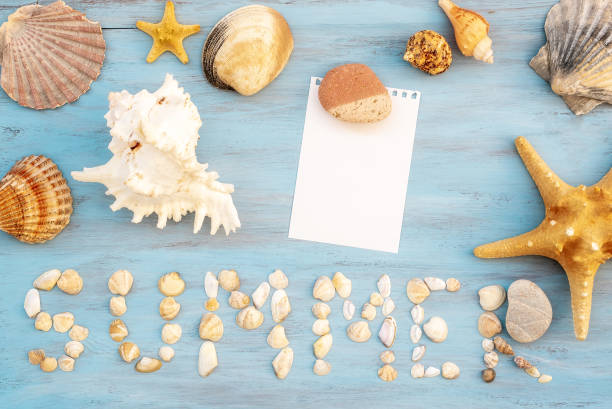I’ve always been amazed by this ocean planet. 71 % of Earth’s surface is covered with water, and 96.5 percent of that is in the oceans. In reality, it’s just one ocean, with bits of land appearing in the middle and everywhere.
What makes us so fortunate to be on an ocean that can support this many life forms both on land and at sea? What is the source of water? Scientists have theories, but it’s impossible to be certain. Are other planets also water-rich? Evidence suggests that oceans exist on other planets. However, Earth remains the one planet with constant, stable bodies of liquid water that lie on its surface. This is due to the fact that Earth is located in the habitable zone. This means that it’s not too close to the sun’s temperature to evaporate water and close enough to the sun to freeze it. Then, there’s the ideal gravity level that keeps the water exactly where we would like the water to go.
I am sure that space exploration is as thrilling as it gets. However, we have no idea about the amazing planet we reside on, and I am left wondering why we’re not more curious about it. A NASA employee once informed me that the quantity spent on exploring the origins and maintenance of life on Earth’s oceans is a rounding error in the amount of money that is spent on space exploration. This is a complete mystery to me! Is there anything better than the place we currently reside?
The Importance of Coral Reefs
Let’s take care to protect and nurture Planet Earth, and the only way to accomplish this is by understanding the planet’s ecosystem. One thing we know is that the oceans are under pressure. Changes in climate are literally changing everything. Consider, for instance, the barrier reefs that we have. The Australian Great Barrier Reef is so massive that it can be observed from space. It spans over 1,400 miles. It’s home to billions of marine species and is considered to be the world’s largest living thing. The importance of it to our survival can’t overstated; every reef is essential for our survival. Why?
From the human perspective, the shorelines are protected from the destruction of storms, which are becoming more frequent due to the extreme fluctuation of ocean temperatures. Storms cause damage to coastlines, taking homes and livelihoods along with them. More than half a billion inhabitants depend on reefs for food, income, and security. The economic value of coral reefs around the world is estimated at several tens of millions of dollars every year.
And what about the reefs that are sometimes referred to as “the rainforests of the sea?” Around 25% of the ocean’s fish depend on the health of coral reefs. This is an enormous amount of fish! They seek refuge and nourishment, breed, and raise their children within the nooks and crannies made by corals. (And I must divert and suggest a documentary that is titled ” My Octopus Teacher.” If you haven’t yet seen it, consider it to be high on your to-watch list. It will not disappoint. ).
Reefs are essential to a healthy ocean. However, the coral reef ecosystems are in danger. Run-off pollution, sedimentation, and unsustainable fishing practices, as well as climate changes, are contributing to coral bleaching and, eventually, death. In 2005, the U.S. lost half its coral reefs located in the Caribbean in a single year due to a major bleaching phenomenon. Between 2014 and 2017, unusually warm waters impacted 70 percent of reefs. It was reported that the Great Barrier Reef lost hundreds of miles due to bleaching.
What Can You Do to Help Our Beautiful and Essential Ocean Reefs?
Even in the event that you live miles from the ocean, the weedkillers and fertilizers you apply will eventually seep into the sea. Find alternatives that are green and won’t hurt coral reefs or marine life.
Investigate the source of your seafood and whether it’s sustainable. Overfishing is among the main risks for coral reefs.
You may think that purchasing wild-caught shrimp is better than farmed ones; however, the methods used for fishing for shrimp are a disaster for the oceans. It’s way too long to go into this article, but the following article will provide you with all the information you should be aware of.
Be cautious when buying aquarium fish. How did they get them?
Recycling and responsibly disposing of garbage. The majority of our waste is tossed into the oceans. When I go to the beach, I bring my garbage bag. I am amazed by the amount of plastic I find that washes up on the shore. Plastic bags have been swathed around coral, eating the coral to death.
Do not purchase coral ornaments or jewelry.
If you enjoy scuba diving or snorkeling, you should avoid touching or standing on coral reefs. Anchoring your boat onto the reef can cause damage to and possibly kill delicate coral creatures.
Volunteer! If you’re located close to the ocean, you can volunteer for local beach cleanups or reef cleanups. If you aren’t close to the sea, you can be involved in protecting the watersheds of your area.
Using Reef Safe Sunscreen
There’s more, but I’ll close with a call to action regarding sunscreens and using one that is safe for reefs. Certain sun-protection ingredients have proven to be harmful to coral reefs. Also, regardless of whether you’re in the water or not, the sunscreen you wear is likely to wash off and eventually end up in. Many people use sunscreens and are unaware they’re negatively affecting coral reefs.
What Sunscreen Ingredients Are Not Reef Safe?
Important ingredients to avoid key ingredients to stay clear of are Oxybenzone or Octinoxate. Also, be aware of the Benzophenone-1 and Benzophenone-8 compounds, as well as 4-methyl benzylidene camphor 3-B, benzylidene-based camphor, and Octocrylene. They can alter the cycle of reproduction in corals as well as damage DNA and make it more difficult for corals to recover from bleaching. Active sunscreen ingredients considered safe for reefs are Zinc Oxide and Titanium Dioxide.
A brief note on the level of protection offered by SPF ratings. (By the side, SPF only refers to UVB protection). SPF 15 is a good choice. SPF 15 shields you from 93 percent of UVB Rays. SPF 30 protects from 97 percent. After that, the difference in protection is minimal. SPF 50 blocks 98% of UVA radiation, and SPF 100 blocks 99% of UVB radiation from hitting the skin. In order to achieve these impressive SPF ratings, significantly more chemicals need to be utilized. Read the Sun Protection Guide for more information.
What Sunscreens Are Reef Safe?
Jane Iredale employs sunscreen that is safe for reefs through our mineral powders. The most highly rated can be found in our Powder-Me SPF30 Dry Sunscreen with an SPF 30, which is made with Titanium Dioxide as its active ingredient. The brush is convenient and makes it easy to apply and reapply, and it comes with refill containers. I’ve worn it for a long time and do not see a reason to switch this time around, even though my days of sunbathing are long gone. It’s better to be safe than to be sorry!

